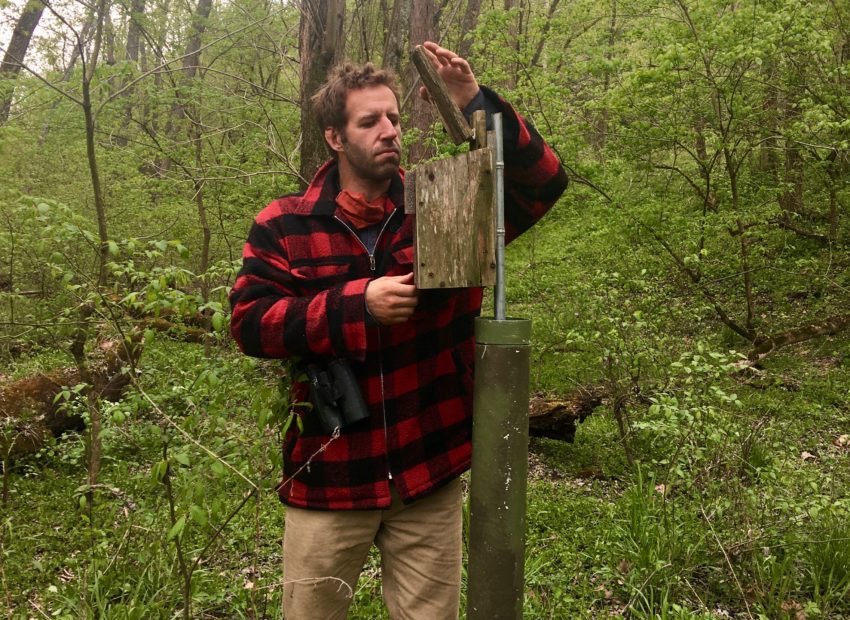If you’re out enjoying a walk in the woods around Athens, you may be lucky enough to see a sprightly yellow-feathered visitor! Each spring, small Prothonotary warblers (PROWs for short) arrive in our woods to nest. We talked with Athens Conservancy board member Joe Brehm to find out more about the birds … and how we’re encouraging them to stick around awhile.
“We want to encourage PROWs to nest in the area. They’re a native species that has lost a lot of their original breeding habitat due to development, agriculture, and other forces that have reduced Ohio’s wetlands,” explains Brehm, who also is Rural Action’s environmental education director. “We’re lucky because the species has been breeding in the Athens area since the 1970s when they nested in a gourd on a local resident’s porch not far from Eclipse Company Store in The Plains.”
PROWs are migratory, wintering in South America and returning to Southeast Ohio in late April or early May. One of just two cavity-nesting warblers in the world, they build their nests in trees in holes that most often had been made by woodpeckers.
Brehm explains that adding numerous nesting boxes around Athens gives them more places to nest. “We have 32 nest boxes specifically for PROWs placed in Athens County close to the bike path (and old canal) between Armitage Road and River Road.
That may seem like a lot, but each PROW pair likes to have a choice, and needs several potential nest sites before settling on one. Boxes are arranged in grids of 4, so at most only 8 of the 32 boxes will be used by Prothonotary Warblers at any time. Other birds like Carolina Chickadees, Carolina Wrens, and House Wrens will make use of the spares
“Donations from many members of the community made it possible for us to fund this project,” Brehm says, “and we have a great team of volunteers who check the boxes.”
PROWs will lay up to five eggs per nest, and the babies usually hatch in late May and early June. Most will stay in the area before returning to South America in the fall. “I like so many things about these birds, including their strong voices and the way they forage down close to the slow water, gleaning insects off branches, roots, and leaves,” Brehm says.
Keep an eye out for the happy, yellow visitors … but resist the urge to peek in a nesting box and possibly startle our brightly-hued friends, he advises.

